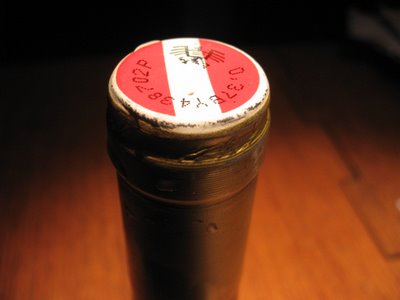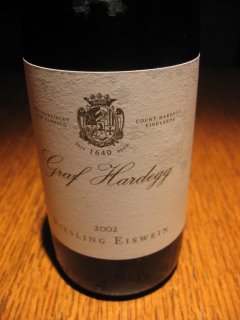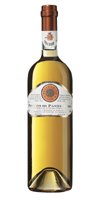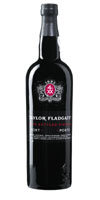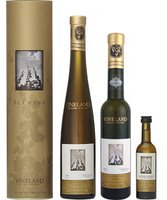Croft makes my favourite wine of the year

Croft Quinta da Roêda Vintage Port 1997 (about $20, per service)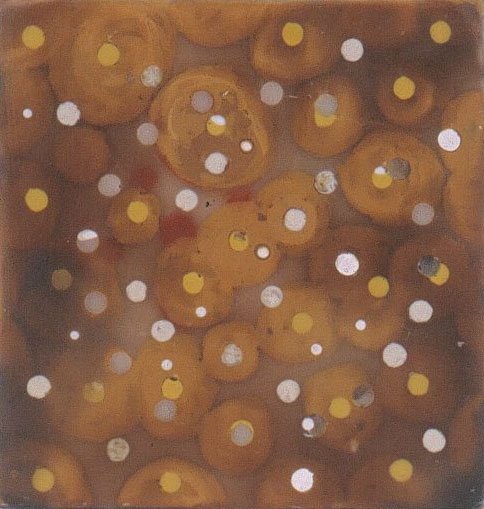 Don't hate me for mentioning port in my year-end look back at the favourite wines I've drunk. Port is wine -- fortified wine -- or wine fortified by the addition of grape brandy. Brandy is a spirit. It's distilled which is where some people like to draw the line between wine and all other alcoholic beverages. Wine is fermented, hence it is alive. Tipple is distilled and therefore it lacks soul.
Don't hate me for mentioning port in my year-end look back at the favourite wines I've drunk. Port is wine -- fortified wine -- or wine fortified by the addition of grape brandy. Brandy is a spirit. It's distilled which is where some people like to draw the line between wine and all other alcoholic beverages. Wine is fermented, hence it is alive. Tipple is distilled and therefore it lacks soul.
But port, or port wine, is still mainly wine -- basically 4/5 fermented grapes. That one-fifth brandy actually is created from distilling other wine. So though port is a small part distilled spirit, all of port's "spirit," so to speak, is wine, through and through.
Here's something else of interest: Who knew that the Portuguese have a definition for Canada, one that likely predates Canada the country? In Portuguese, Canada is a measure used in making port wine. It's "the amount a man should drink everyday [which is the equivalent of] 2 liters" (note the non-Canadian spelling of litres). I got this information from the Croft website glossary. I hope they're talking about drinking water here, because 2 litres a day of port wine or even the most watered-down wine sounds deadly. I have no idea how using this measure actually helps in the production of port wine.
Speaking of appropriate portions, since port is fortified wine it is best delivered in small amounts, definitely in smaller amounts than wine. Higher alcohol, greater concentration and denser viscosity all work to limit your intake of port in one sitting. So it's no wonder port can cost three or four times that of a fine table wine. A single bottle of port will often last over three or four dinners in the average two-person household. Where the 750mL bottle of table wine is something I'd consider "one service" (i.e. it is entirely served during the meal at a dinner for two), the exact same size bottle of port is what I'd call three or four services (i.e. it is not entirely served during a dinner for two; it would have additional services left in it).
Using this principle, I'm squeezing an $85 bottle of port by my spend-about-$20 rule. This is cheating perhaps. But the important thing is that this stuff happened to be some the best wine I drank all year, no question. This says more about my burgeoning interest in port than it might about the quality of this Croft bottle versus others -- I would have a hard time ranking this as today's best port since my background is so limited. But if I'm honest, the best vintage port I drank in 2007 was the only vintage port I tasted, and it was definitely amazing stuff. I would recommend this bottle to any wino.
MY TASTING NOTES ON PORT WINE
This port is from a vintage ten years ago at Quinta da Roêda, a vineyard that has long been recognized as one of the great port vineyards of the Douro Valley. Of Roêda, nineteenth century poet Vega Cabral is to have said: "If the wine district were a golden ring, Roêda would be the diamond." Croft's Quinta da Roêda is not produced every year -- vintage port never is. It comes out only after exceptional years. But unlike other ports Croft's Quinta da Roêda is made from grapes of a single vineyard, rather than mixed with grapes from several vineyards. (The best port, quite opposite to the best wine, is drawn from grapes of multiple vineyards -- so as to gather the very best grapes of the vintage... hmmm! Terroir is not port wine idea.)
Croft's Quinta da Roêda tastes like the finest wine I can imagine, concentrated into something stronger while still retaining the balance of the wine it was made from. It's as savoury as it is sweet. You taste it for hours after you've swallowed it. It's out of this world.
That's the best tasting note I can give on it at this stage of my wino life. Perhaps I'll develop a tasting note template for port that alters the existing one I use for regular table wine. I think I would at the very least need to eliminate the food pairings from the note since port, while nice with chocolate or rich cheeses, generally is not something around which you'd base your food, no less your meals. It's a few sips to be relished, and the astounding length of it helps prolong your (single) glass of it anyway.
I got a great deal on this bottle and gave it as a birthday gift to a friend who was celebrating a birthday early in the year. Soon after that, I was treated to a taste, which meant it was opened only as it was starting to peak (vintage ports need a minimum of ten to 15 years before consuming. That generalization surprised me slightly when I took a sip. I can't fathom that it would possibly get any better than what I had tasted, but then I'm newbie (for now) when it comes to port wine.






